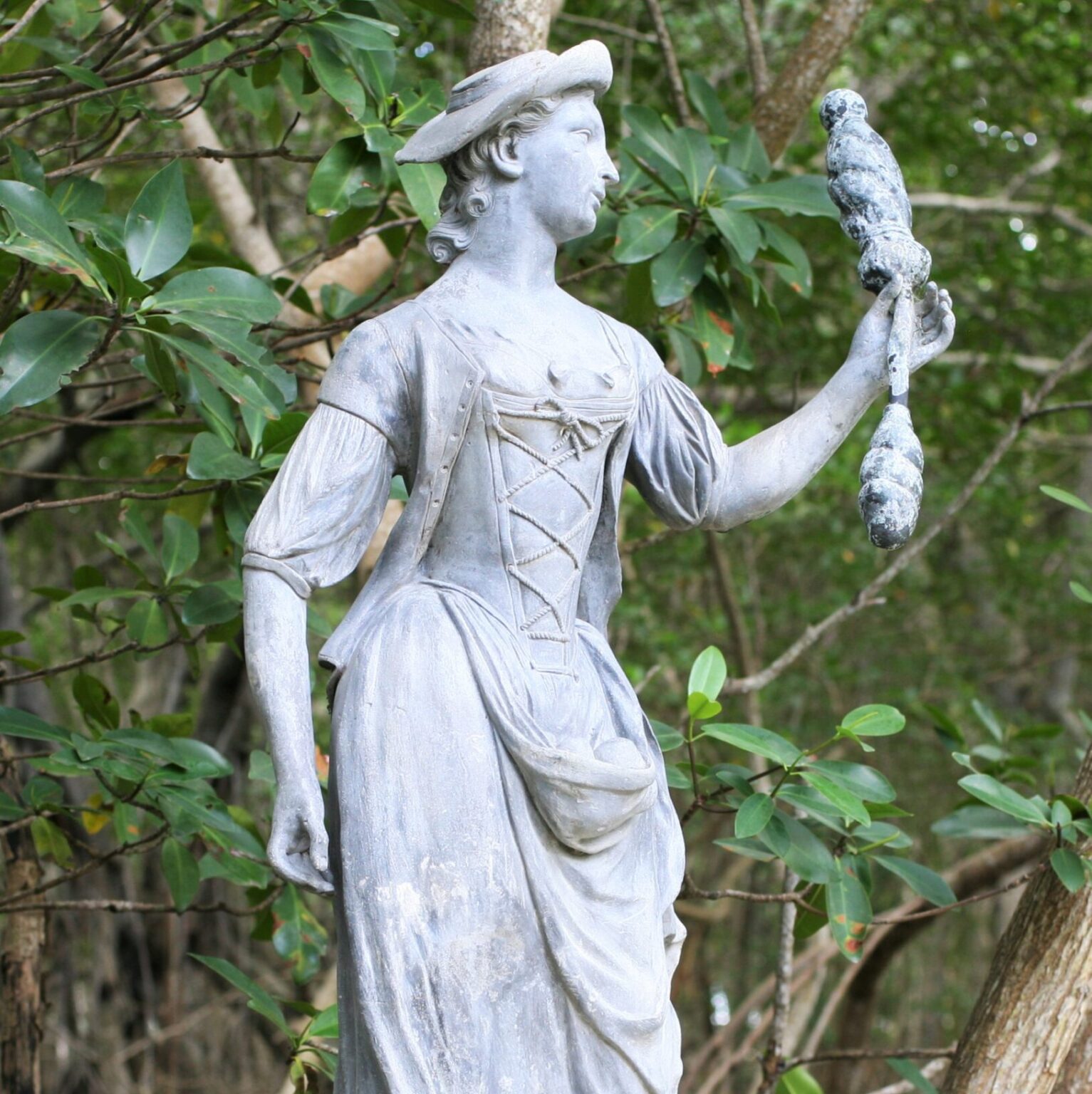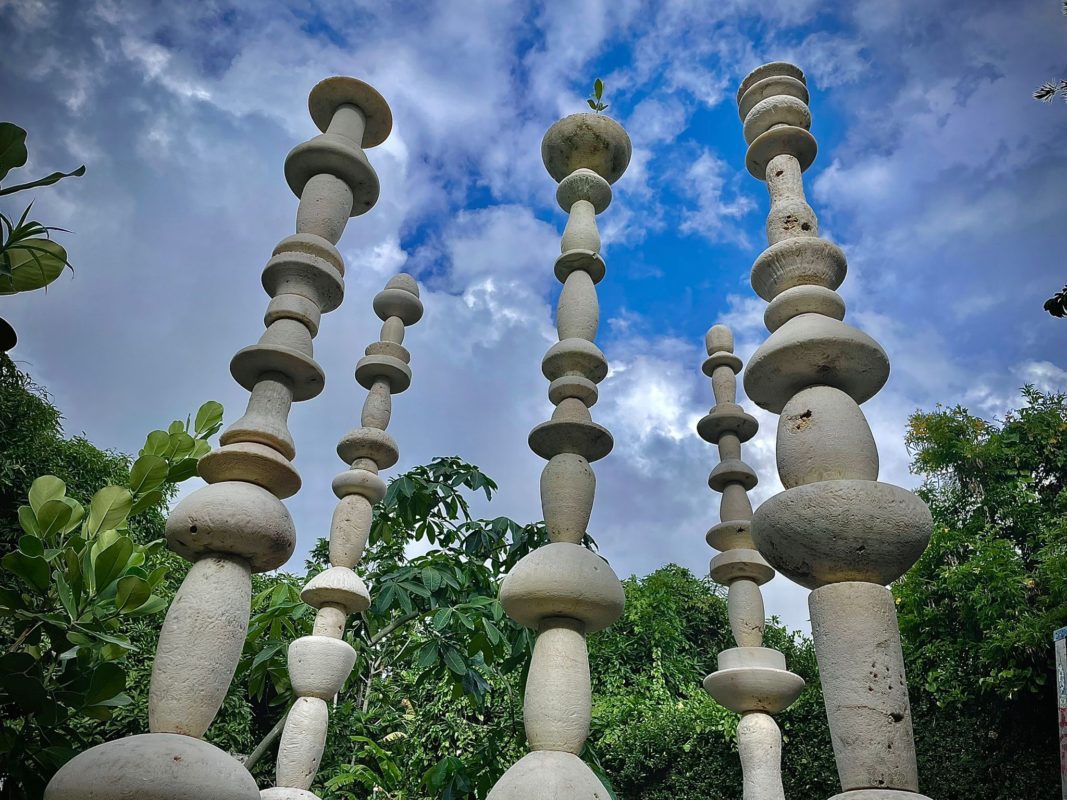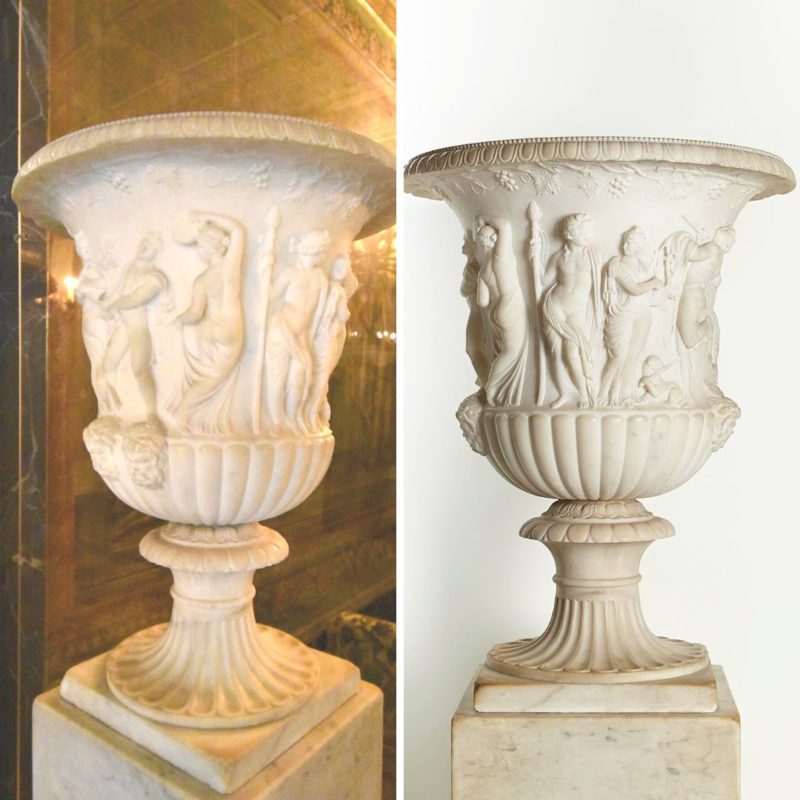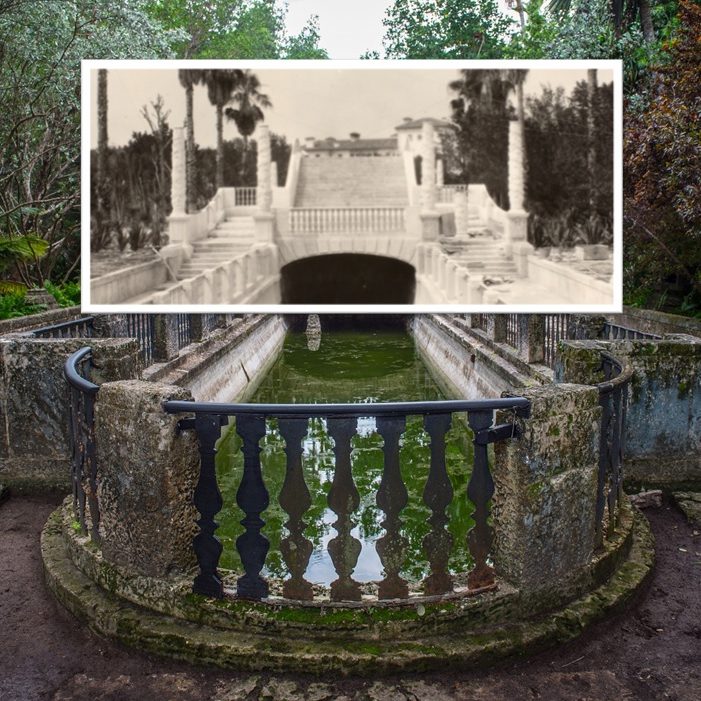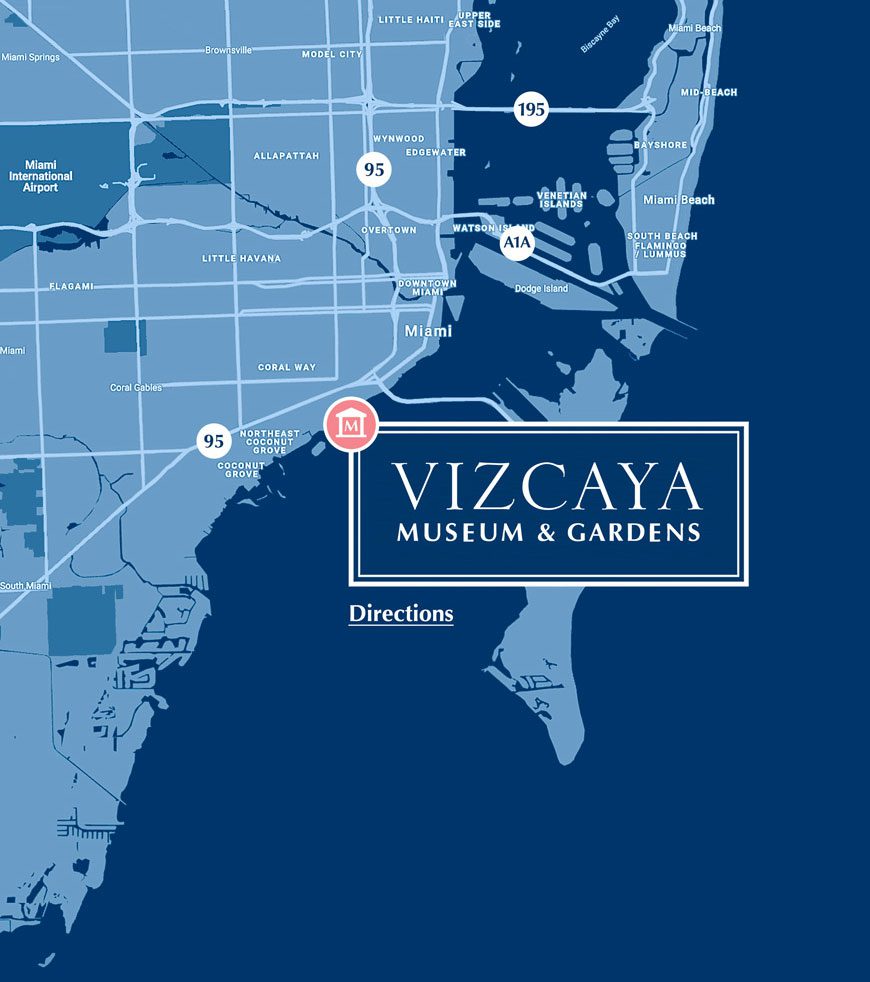Introduction to Romanticism Movement
During the 18th century, an artistic movement known as Romanticism spread throughout Europe, seeking to evoke an idealized world of rural simplicity in contrast to the urban, industrialized centers of the cities. This nostalgic vision of a peaceful countryside was expressed through various art forms, including oil paintings and lead garden statues. The subjects of these artworks often depicted shepherds, huntsmen, and other rural figures, presenting an idyllic way of life, particularly for urban audiences.
Meet the Vizcaya Shepherd and Shepherdess
The Vizcaya Shepherd and his companion are attributed to the talented sculptor John Cheere (1709-1787) and date back to the mid-18th century. Acquired in England in 1917, these figurines were brought to adorn the picturesque Vizcaya gardens. The Shepherd statue stands at an impressive 50 inches in height, exuding a sense of grandeur and significance.
The Shepherdess is delicately adorned in a laced-front dress, her apron neatly tied in the front, and her attire completed with a brimmed hat and buckle shoes. Her companion, the Shepherd, stands casually with crossed legs, donning breeches, a soft shirt, and an open jacket, all complemented by a similar hat and buckle shoes. Originally, each statue held an attribute that added to their narrative, but those attributes have been lost to time.
John Cheere’s Legacy and Artistic Influence
John Cheere was a prolific artist, leaving behind an impressive array of garden ornaments scattered across England and Portugal. His expertise lay in the mass production of lead and plaster statues and busts, which were highly favored among the 18th-century aristocracy, particularly for embellishing their summer houses. The demand for statues depicting pastoral themes was considerable during this era. These statues not only captured the essence of their time but were often painted with life-like colors, enhancing their visual appeal. Each workshop had its distinct style, making it possible to attribute surviving examples to specific artisans.
The Challenge of Time and Environmental Damage
Unfortunately, lead statues are susceptible to gradual deterioration if not adequately maintained. The Vizcaya Shepherd and Shepherdess, being substantial figurines, were cast with an internal armature enveloped by a plaster core. Over time, exposure to the elements allowed water to seep into the lead surface through small cracks or holes, leading to rusting of the internal iron armature. Ultimately, this resulted in the splitting of the lead and the eventual collapse of the sculptures, akin to the disintegration of their skeletal structure. Moreover, plant growth exploited splits in the lead surface, exacerbating the damage. After more than two centuries, the statues bore the unmistakable effects of environmental wear and tear.
Preserving the Past: Restoration Efforts
In 1990, to prevent the statues from being lost to the ravages of time, the shepherd and the shepherdess were sent to the Washington University Technical Associates Conservation laboratory in St. Louis, Missouri, for extensive restoration. The dedicated team at the laboratory meticulously replicated the missing features to restore the statues to their original splendor. This painstaking effort aimed to honor the artistry of John Cheere and ensure that future generations could continue to appreciate these historical treasures.
A Revival in Vizcaya Gardens
Today, visitors can find the shepherd and the shepherdess statues proudly displayed in the Theatre Garden, nestled on the east side of Vizcaya’s gardens, near the enchanting Maze and serene mangroves. Through careful restoration and adherence to the original drawings of the Theatre Garden, Vizcaya has succeeded in recreating the statues’ appearance as they were during Deering’s time, rekindling the romance of the Romanticism movement.
The Shepherd & The Shepherdess stand as a testament to the enduring allure of Romanticism in art and the meticulous efforts undertaken to preserve and cherish our cultural heritage. As these captivating statues continue to grace the Theatre Garden, they invite visitors to step into a bygone era, where the pastoral and the urban meld into a timeless harmony.
This project has been made possible in part by a major grant from the National Endowment for the Humanities: Democracy demands wisdom.
Any views, findings, conclusions, or recommendations expressed in here, do not necessarily represent those of the National Endowment for the Humanities.
Support Vizcaya’s Conservation Efforts
Help Vizcaya continue to preserve its vast collection by making an online donation.
Together, we can safeguard this rich cultural heritage for future generations to explore and appreciate.


